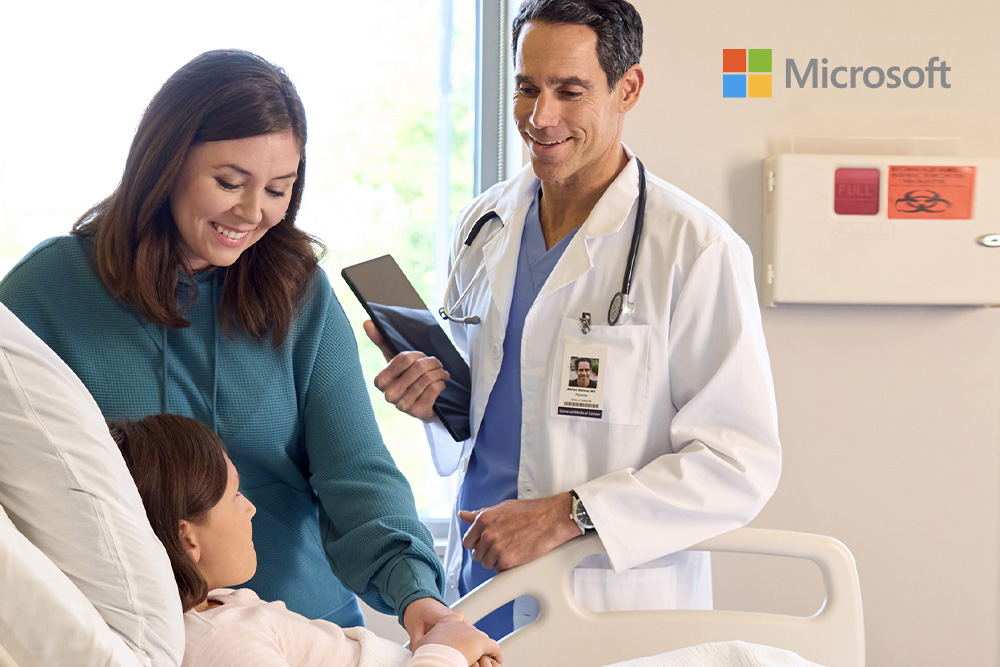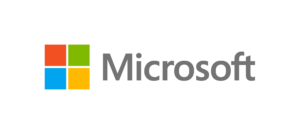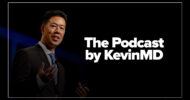This article is sponsored by Microsoft Dragon Copilot.
Microsoft Dragon Copilot, part of Microsoft Cloud for Health Care, provides an AI assistant for clinical workflow. It combines ambient conversation capture, natural language understanding, and advanced generative AI to streamline documentation, surface information, and automate tasks.
To understand how Dragon Copilot benefits providers and their patients—and address potential concerns clinicians may have about the technology—we spoke to the physician who first had the idea for ambient listening and automatic note creation for clinical documentation: Dr. Jared Pelo.
How did you come up with the idea for ambient listening? And how has the technology evolved over the last 10 years?
Every physician has thought, “I shouldn’t have to write my own notes—computers should write my notes for me.” Coming up with the idea wasn’t the hard part; I knew we needed something different from dictation like enabling clinicians to just have a patient conversation and have the recording turned into a clinical note for them to review.
After finding it difficult to get the initial innovation off the ground in a hospital as a medical director, I realized I needed to set up a company to build this. Over the last decade, we’ve gone from utilizing medical scribes to ambient clinical intelligence for automatic note creation. And now, we have the addition of an AI copilot that can assist with so many of the mundane aspects of clinical workflow.
Besides automatic note creation, are there other things clinicians can use Dragon Copilot for?
Not only can Dragon Copilot streamline documentation but it can also automate tasks in other parts of the workflow such as ordering, writing referral letters, or creating after-visit summaries to name but a few.
On top of that, Dragon Copilot can surface medical information from trusted sources such as the CDC, Medline, CMS, and the MSD Merck Manual and provide it to the physician at the point of care. For example, let’s say you have a patient you’re putting on a drug you don’t use very often, and they have a GFR of 30, you know you’re going to need to adjust the dosage. Copilot can look through the sources and bring you dosage guidance right inside your workflow, so you don’t have to go looking for it.
Did you involve practicing physicians in the development of Dragon Copilot?
Since the inception of the original idea, physicians have always driven product innovation. The product is only useful if it’s clinically useful—if it offloads tasks from physicians that they don’t want to be doing. We have constant involvement from physicians, giving us design input and feedback, that has and will continue to guide product development.
What impact does using Dragon Copilot have on clinicians?
The biggest impact is reducing the documentation burden and giving clinicians their lives back, so they don’t have those feelings of burnout or decide they need to leave the profession.
Every day, we hear stories from clinicians telling us how much Dragon Copilot has improved their work-life balance. One of my favorites was a physician telling us that their spouse wanted to send us flowers on Valentine’s Day because Dragon Copilot saved their marriage! Or another one where the physician’s child said, “Why are you at my baseball game? You’re never here!”
So, if you’re a physician who feels burned out and has lost hope, I want you to know two things. One: What you do matters every single day—it matters to the patients you serve. And two: We’re building solutions that enable you to do your work during work hours, and do it with more joy. There is hope for the future.
What’s the impact of Dragon Copilot on patients?
I think the most important benefit for patients when their clinician uses Dragon Copilot is the reduction in medical errors. We’ve seen many cases where a physician is reviewing a note and says, “The patient never told me they had cancer—why is that on the note?” Then they look at the transcript and see the patient mentioned it in passing, and that knowledge will drive the physician’s care for that patient.
We also know that physicians who experience burnout are more likely to make medical errors. With DAX Copilot, the predecessor to Dragon Copilot whose capabilities are now part of Dragon Copilot, 70 percent of users said they experienced reduced feelings of burnout and fatigue (according to a Microsoft survey of 879 clinicians across 340 health care organizations using DAX Copilot, July 2024). So we know we’re helping patients by giving them better doctors—doctors who are happier about delivering care and are ready to engage with them.
Do clinicians need to change how they work to use Dragon Copilot effectively?
For some clinicians, it’s perfect right out of the box. Clinicians who already talk a lot to their patients will find it’s as easy as just turning it on. Clinicians who don’t communicate as much with their patients will need to learn how to do that more or summarize the conversation for Dragon Copilot after the visit.
Clinicians also need to tell Dragon Copilot about the unspoken nuances of the conversation. For example, if a patient says, “It hurts here,” and points at their left shoulder, the clinician needs to say, “Oh, your left shoulder is hurting.”
What’s the future of AI in health care?
What I think is so exciting is that we’re only at the very beginning of this AI revolution, and these solutions will continue to advance and become better for us.
We’ll see a continued expansion of AI taking on more of the mundane, clerical work of medicine, so clinicians can connect with patients and provide great care. We’ll also see an increase in using AI tools for clinical decision support, providing clinical intelligence at the point of care and alerting physicians to things they might miss.
I think in a few years’ time it will be highly unusual not to have clinician-patient conversations recorded by AI, because we’ll learn that a human plus AI is better medicine. It’s safer, it guides us, it helps us not miss things, it helps us not make mistakes. I think we’re headed toward a time where every patient interaction is recorded by AI, if a patient opts into it, so that they receive better, safer care.
Right now, we’re at the stage where it’s like the internet in the early 1990s, when it was really exciting for a small group of people. And now the internet is everywhere, and we can’t imagine data not flowing freely and quickly. I think 20 years from now, it will be the same with AI—we won’t be able to imagine not having this intelligence helping us all the time.
Learn more
- Find out more about Microsoft Dragon Copilot
- Explore the full capabilities of Microsoft Cloud for Health Care
Jared Pelo is an emergency physician and chief medical information officer, Microsoft Dragon Copilot.
Microsoft Dragon Copilot, your AI assistant for clinical workflow, is transforming how clinicians work. Now you can streamline and customize documentation, surface information right at the point of care, and automate tasks with just a click.
Part of Microsoft Cloud for Healthcare, Dragon Copilot offers an extensible AI workspace and a single, integrated platform to help unlock new levels of efficiency. Plus, it’s backed by a proven track record and decades of clinical expertise—and it’s built on a foundation of trust.
It’s time to ease your administrative burdens and stay focused on what matters most with Dragon Copilot, your AI assistant for clinical workflow.






















![Catching type 1 diabetes before it becomes life-threatening [PODCAST]](https://kevinmd.com/wp-content/uploads/Design-2-190x100.jpg)


![Why high-quality embryos sometimes fail to implant [PODCAST]](https://kevinmd.com/wp-content/uploads/Design-3-190x100.jpg)

![Treating your bone density like a retirement account [PODCAST]](https://kevinmd.com/wp-content/uploads/Design-1-190x100.jpg)
